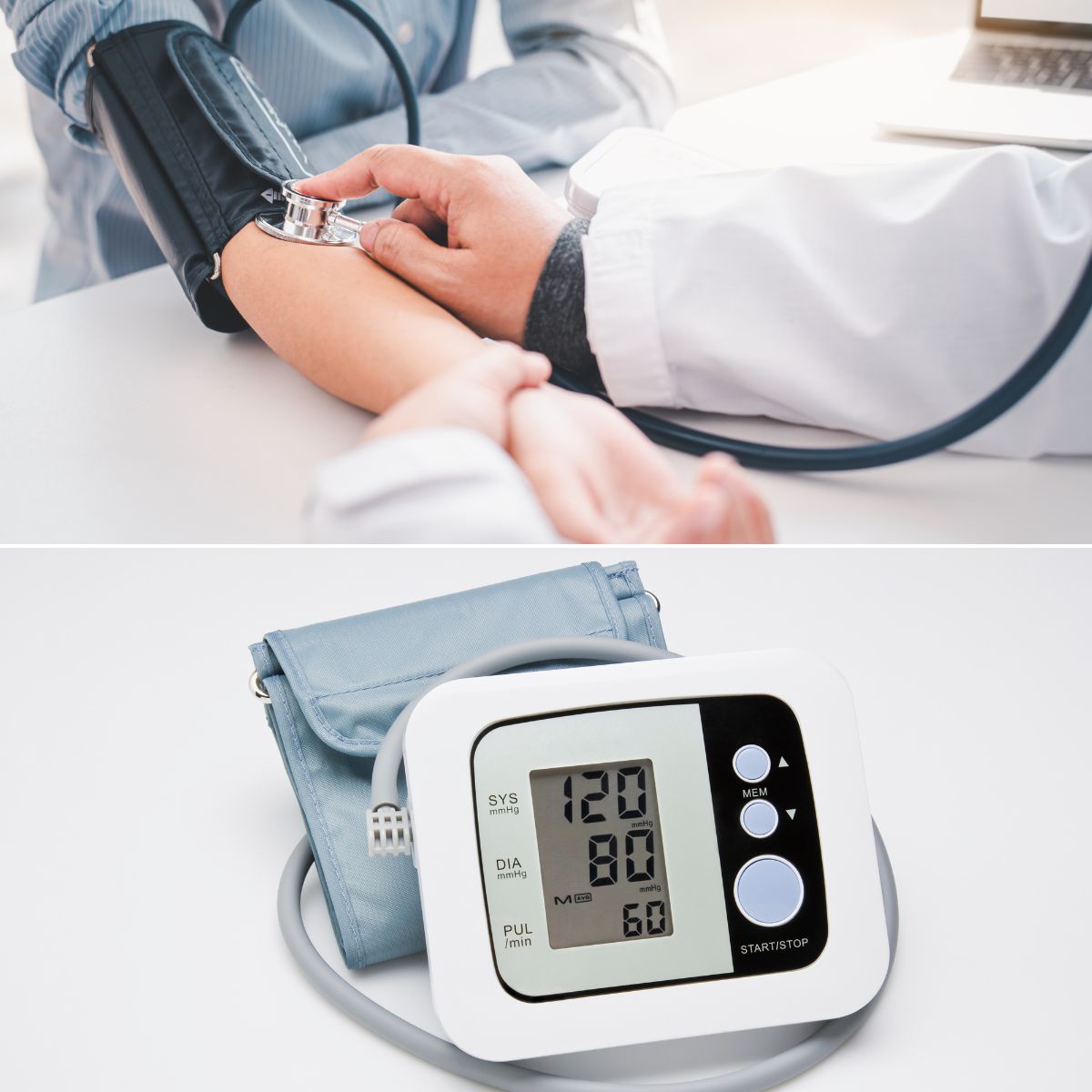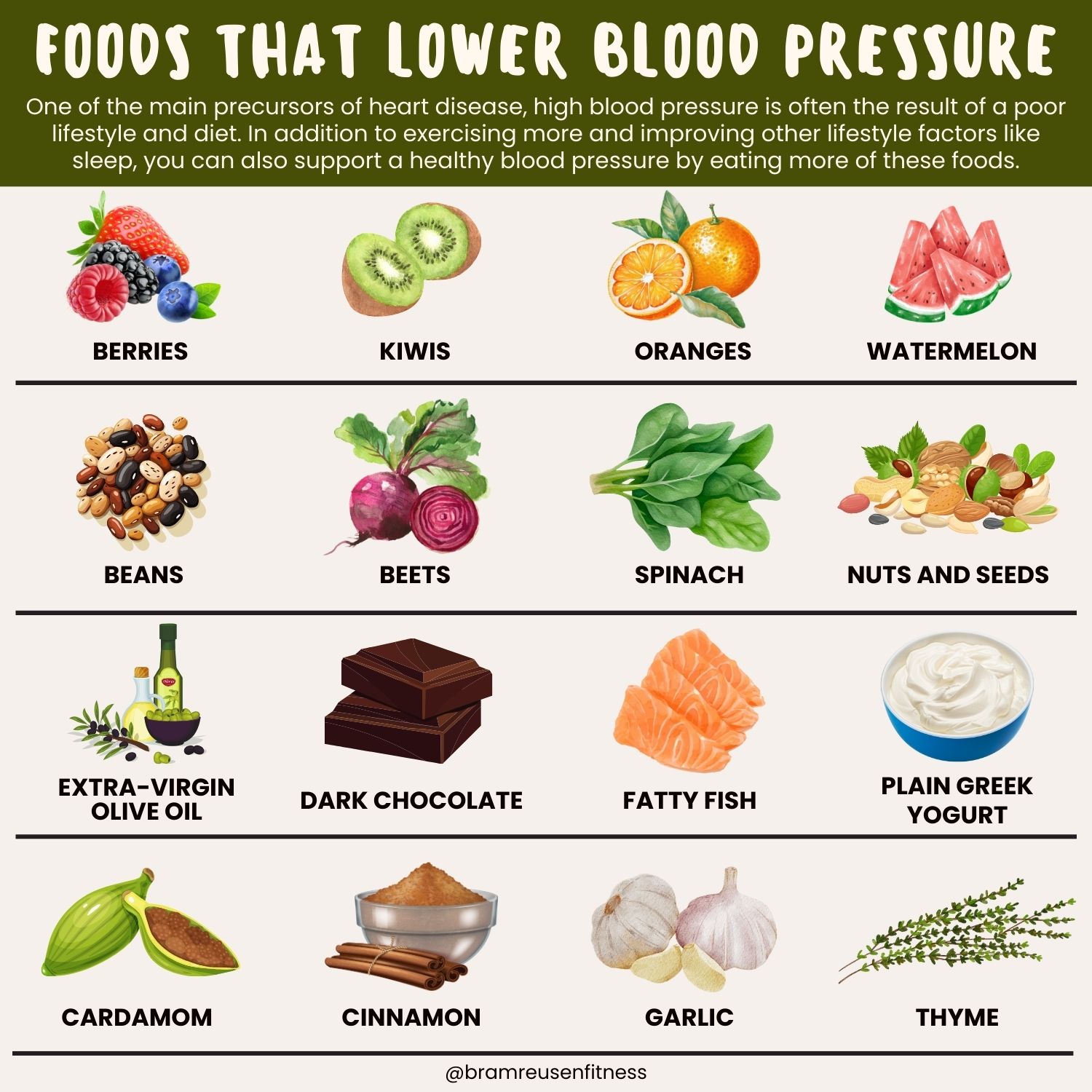Because there are usually no visible or noticeable symptoms, high blood pressure (or hypertension) is often called a “silent killer.” Many people who have it don’t know they have it.
When not or improperly addressed, this may eventually lead to the development of serious and even life-threatening health issues, such as stroke, heart attack, heart failure, kidney disease, or loss of eyesight.
In short, blood pressure is a vital health marker that you want to check on a regular basis. If you do happen to have elevated blood pressure or actual hypertension, it’s time for some changes to your lifestyle and diet. The sooner, the better.

What Causes High Blood Pressure?
Although the exact causes of high blood pressure are unknown, there are some lifestyle factors that increase your risk of developing hypertension. Those include a sedentary lifestyle, smoking, consuming excessive amounts of alcohol, stress, lack of exercise, obesity, and a poor diet.
Additionally, genetics or particular health problems may also contribute to hypertension.
While you can’t control your genetic predisposition, you do have full control over your lifestyle choices. Not smoking, limiting or avoiding alcohol, resistance training and cardiovascular exercise, getting enough sleep, and managing stress will all help you keep your blood pressure at a healthy level.
Salt (sodium chloride) is often considered to be the main culprit when it comes to high blood pressure. And while salt intake definitely plays a role, sodium is also an essential electrolyte that’s required by your body to function properly.
Reduction in salt intake may be a good step in the process of lowering blood pressure, but it’s by no means the only thing you can or should do.
In fact, eating more of other foods and ingredients can also help lower your blood pressure. Foods that contain high amounts of fiber, magnesium, and potassium may have particularly beneficial effects on your blood pressure.
How Is Blood Pressure Measured?
Blood pressure is measured in millimeters of mercury (mm Hg) and made up of two numbers: systolic and diastolic.
- Systolic blood pressure is the pressure your blood puts on your artery walls when your heart beats. It’s the first (and highest) number of the reading.
- Diastolic blood pressure is the pressure of your blood against your artery walls in between heart beats. It’s the second (and lowest) number of the reading.
Both numbers are important and can indicate the presence or development of hypertension.
However, the American Heart Association says that systolic blood pressure “tells more about risk factors for heart disease for people over 50.” This is because when people get older, they usually get higher systolic readings due to the stiffening of arteries and more plaque buildup over time.
A healthy blood pressure is a systolic blood pressure of less than 120 and a diastolic blood pressure of less than 80.
Learn more about how to interpret blood pressure numbers here.

Which Foods Can Help Lower Blood Pressure?
The following list of blood pressure-lowering foods is by no means exhaustive, but it is a great place to start. From beans, beets, and berries to Greek yogurt and dark chocolate, all these foods are easy to find, (relatively) cheap, and have numerous other health benefits as well.
Note that many of these foods have other health benefits as well, such as helping lower your LDL cholesterol.
I recommend including these foods in your weekly meal plan. Ideally, you’d eat several of them on a daily basis, rotating and repeating them throughout the week.
For example, a breakfast of Greek yogurt with nuts, seeds, and berries is a phenomenally healthy way to start your day. Snack on fruits during the day. Try to eat fatty fish at least twice a week, ideally alongside some fiber-rich vegetables like broccoli, Brussels sprouts, cauliflower, asparagus, sweet potatoes, and/or legumes.
- Beans
- Beets
- Berries
- Cardamom
- Cinnamon
- Dark chocolate
- Extra-virgin olive oil
- Fatty fish
- Garlic
- Kiwis
- Nuts and seeds
- Oranges
- Plain Greek yogurt
- Spinach
- Thyme
- Watermelon






